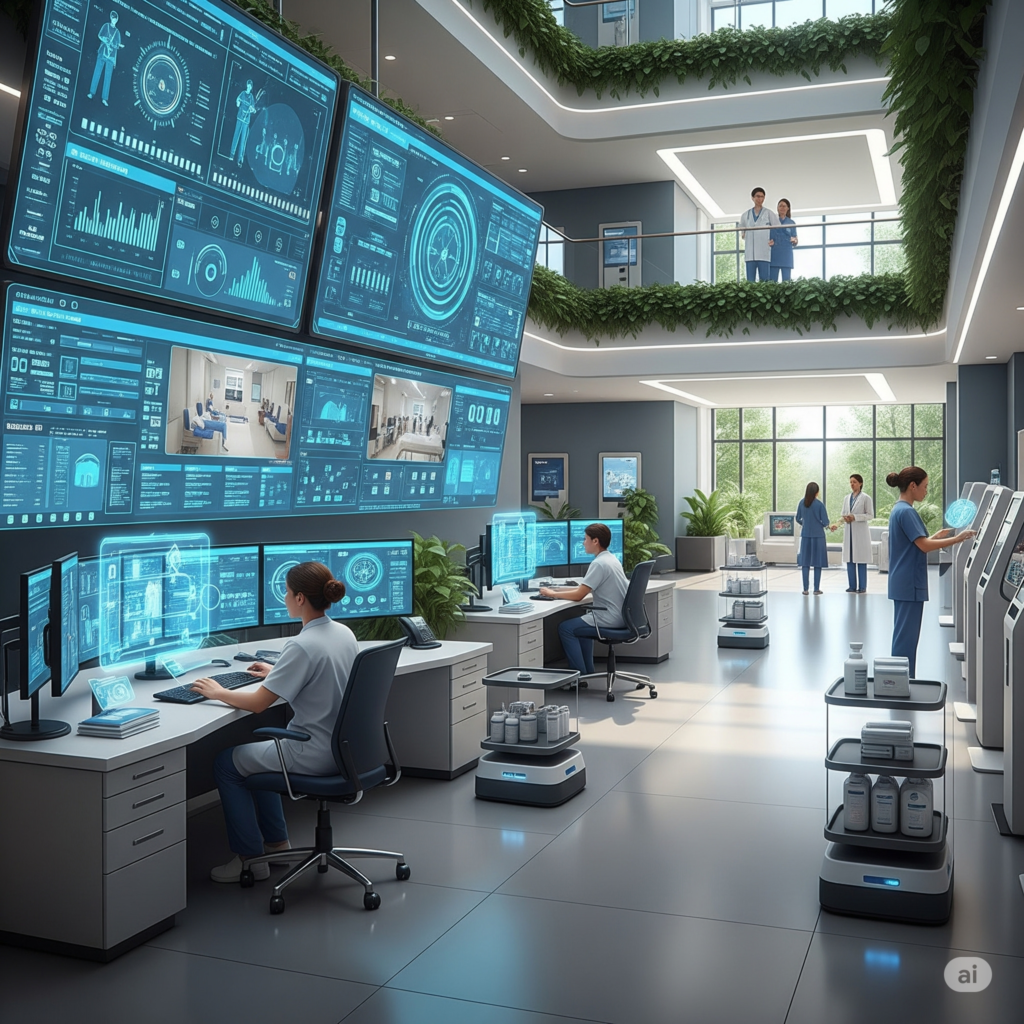
The term “smart hospital” might bring to mind images of futuristic robots and flashy gadgets, but the reality is much more profound. It represents a fundamental shift in healthcare,from simply treating sickness to proactively, and even predictively, managing wellness.
At its heart, a smart hospital is built on a digital-first infrastructure, where technology and the physical environment work in perfect harmony. It’s built on five key pillars:
- The Digital Backbone: Connected, Centralized, and Real-Time
This is the central nervous system of the hospital. It relies on a robust IT framework that includes Hospital Information Systems (HIS), Electronic Medical Records (EMR), and Picture Archiving & Communication Systems (PACS). When every department, device, and team is connected, decisions are faster, duplication is eliminated, and care is safer.
- Smart Monitoring for Predictive Care
Imagine detecting a patient’s decline hours before physical symptoms appear. Smart hospitals make this possible with wearable sensors and AI-powered dashboards that track vitals continuously. These systems can send automated alerts and escalations, bringing predictive care from the ICU to the general ward.
- Automation That Works for Humans
Smart automation is about reducing the risk of human error and freeing up skilled staff to focus on patients, not paperwork. This includes automated pharmacies that dispense medications, barcode-based systems for tracking lab samples, and AI-assisted diagnostics that can read scans with incredible accuracy.
- A Seamless and Digital Patient Journey
In a smart hospital, the patient experience is frictionless and designed for convenience. This journey begins with online appointment booking and self-check-in kiosks, continues with app-based navigation to find your way around the hospital, and ends with digital reports and billing. Every interaction is efficient, paperless, and puts the patient first.
- Flexible Infrastructure That’s Ready for Anything
The pandemic taught us that hospitals must be able to adapt,quickly. Smart hospitals are designed with this in mind, featuring modular wards that can be converted into ICUs, plug-and-play medical gas systems, and an IT infrastructure that can scale to support a surge in telemedicine or future technologies like robotics.
A smart hospital is not just a building with sensors. It’s a living, learning system that adapts to the needs of its patients and staff. For healthcare leaders, this means investing in an infrastructure that is digital at its core, human in its design, and scalable by intent. In the future of healthcare, “smart” isn’t a luxury; it’s the new standard.
